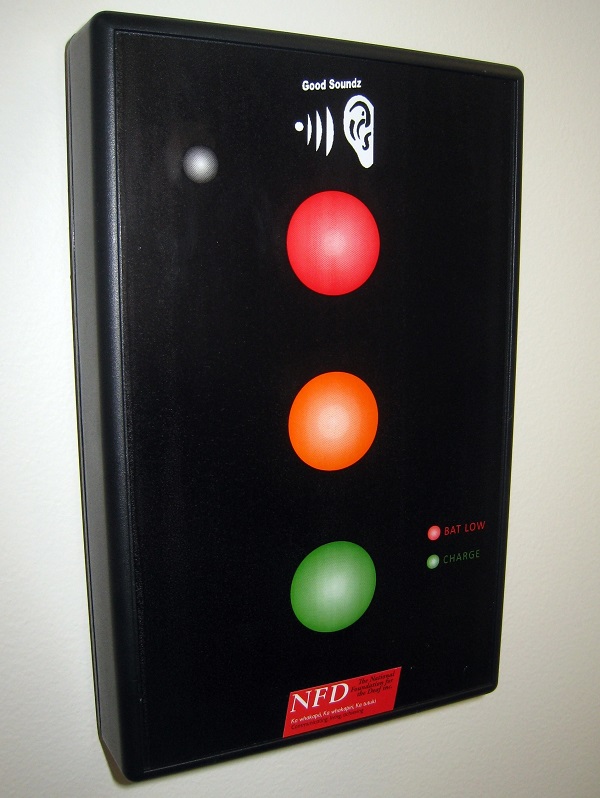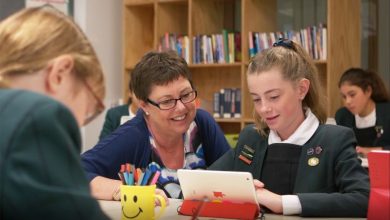Which teaching aids for learning support?

Students with learning disabilities need to be taught differently or need some accommodations to enhance their learning environment. School News looks at the teaching aids and resources available for assisting students with special educational needs.
Vision
Since so much information in the classroom is presented visually and/or verbally, the child with a visual perceptual disorder can be at a disadvantage.
Signs of vision problems in children include:
- Clumsier than is usual for their age
- Screws up their eyes or tilts their head to see
- Frequent headaches
Some optometrists offer free eye tests for children. A GP referral is required for an appointment at a hospital eye clinic. Subsidies are available to help families with the cost of optometry treatment for school-age children.
Irlen Syndrome
Irlen Syndrome (also known as Meares-Irlen Syndrome, Scotopic Sensitivity Syndrome, and Visual Stress) is a problem with the brain’s ability to process visual information. It is not detected through traditional vision screening. To a child with Irlens, words on a page may appear blurry, moving or to disappear.
Behavioural optometrists can diagnose Irlen Syndrome and provide appropriate spectacles. Coloured filters can be helpful, and some teachers keep a supply for children to use when reading. Some learners like to read on screens with the back light adjusted to say, green or blue.
Hearing loss
It goes without saying that hearing loss can have a huge impact on a child’s ability to participate at school – and most teachers will have at least one pupil in their class who is affected. It’s likely too, that some of those students will be unaware of their own hearing difficulties.
We know one in six New Zealanders have some degree of hearing loss, but as new entrants are not screened for deafness, it is unknown exactly how many school pupils are struggling to hear.
Children with hearing loss may:
- have speech or language difficulties
- have trouble following instructions
- be easily distracted, or
- have difficulty paying attention in class
Audio processing disorder (APD)
A child with APD, thought to affect four per cent of school age children, will have difficulty processing and/or remembering spoken information. APD is not hearing loss, but a disorder in which the ears process sound normally but something interferes with the way the brain recognises and interprets sounds, especially speech.
Early diagnosis is important because when the condition isn’t caught and treated early, a child can have speech and language delays or problems learning in school.
Teachers can ask the parent or caregiver whether the child has had a hearing test. Many clinics will do these at no cost. A normal hearing test will not detect APD; the child should be referred to an audiologist who can administer the appropriate tests.

FM system
For children with hearing aids, a personal FM system may be helpful. This is a device that transmits sound to a child through a receiver attached to a hearing aid, and is often used to help hearing-impaired children hear the teacher in a classroom.
The Ministry of Education may be able to fund a personal FM system for school-age children. The school can apply for funding by contacting the MoE’s special education department.
Keeping noise down
Hearing-impaired learners need a quieter setting to learn, something that benefits all students, so it’s important that classroom noise levels be kept down.
Some schools find sound indicators very useful. These are traffic light-type systems which give a green light for good working conditions, orange and red for warnings. The teacher only needs to point at the red light in order for the students to realise they need to quieten down. Schools can apply to the National Foundation for the Deaf (NFD) for funding to buy safe sound indicators.
Dyslexia
Dyslexia affects an estimated one in ten New Zealander, including 70,000 school children. It is usually first uncovered in the classroom environment when core reading and writing skills are being taught. However, it is equally common for dyslexia to go undiagnosed, with students labelled “slow” or “struggling”.
Indicators include:
- Problems with labels, rhymes, sequences
- Letters or numbers reversed or confused b/d/p/q, n/u, 13/31
- Retrieval issues – learns something one moment, gone the next
- Large gap between oral and written capabilities
- Reluctance, embarrassment or avoidance around reading out loud
- Poor handwriting, punctuation and grammar
What to do
The Dyslexia Foundation encourages schools to use a self-review process to become “dyslexia aware”, or 4D. A 4D school is one in which all three levels have been completed to fully integrate targets for best practice. More than 500 schools in New Zealand have signed up to become 4D. To get your school signed up and to access free, downloadable resources, go to the Dyslexia Foundation website.
Austism spectrum disorder (ASD)
ASD is a life-long development disability affecting social and communication skills. In New Zealand, one in 66 people are affected. Special education programmes and structured support can really make a difference to a child’s life, helping to maximise skills and achieve full potential in adulthood. Classroom support is vital.
Signs of ASD in children include but are not limited to:
- Doesn’t play “pretend” games, engage in group games, or use toys in creative ways
- Has trouble understanding feelings or talking about them
- Avoids eye contact
- Uses facial expressions that don’t match what he or she is saying
- Reacts unusually to sights, smells, textures, and sounds. May be especially sensitive to loud noises. Abnormal posture, clumsiness, or eccentric ways of moving (e.g., walking exclusively on tiptoe)
- Repeats the same words or phrases over and over, often without communicative intent
The process of diagnosis of ASD with start with the child’s GP who can make a specialist referral. Autism New Zealand provides comprehensive information about ASD and support services, including working with educational professionals.
 Assistive technology
Assistive technology
Assistive technology (AT) is specialised equipment and technology that students with additional learning needs use in class to increase or improve their ability to participate and learn. This could be an iPad and a literacy support app for a student with dyslexia, modified furniture for pupils with physical disabilities or an early Braille typewriter for a child who is losing their sight. Funding is available by application to the Ministry of Education. For more information, go to Assistive Technology on the MoE’s website.
Upskilling opportunities for teachers
There are numerous opportunities for teachers to extend their skills in working with students with additional learning needs. Some of these are:
- Autism Spectrum Disorder Study Award opens 1 August 2017 and closes 30 September2017.
- Blind and Low Vision Study Award opens 1 August 2017 and closes 30 September 2017.
- Complex Educational Needs Study Award opens 1 August 2017 and closes 30 September 2017.
- Deaf and Hard of Hearing Study Award opens 1 August 2017 and closes 30 September 2017.
- Resource Teachers: Learning and Behaviour (RTLB) Study Award opens 1 August 2017 and closes 10 November 2017.









